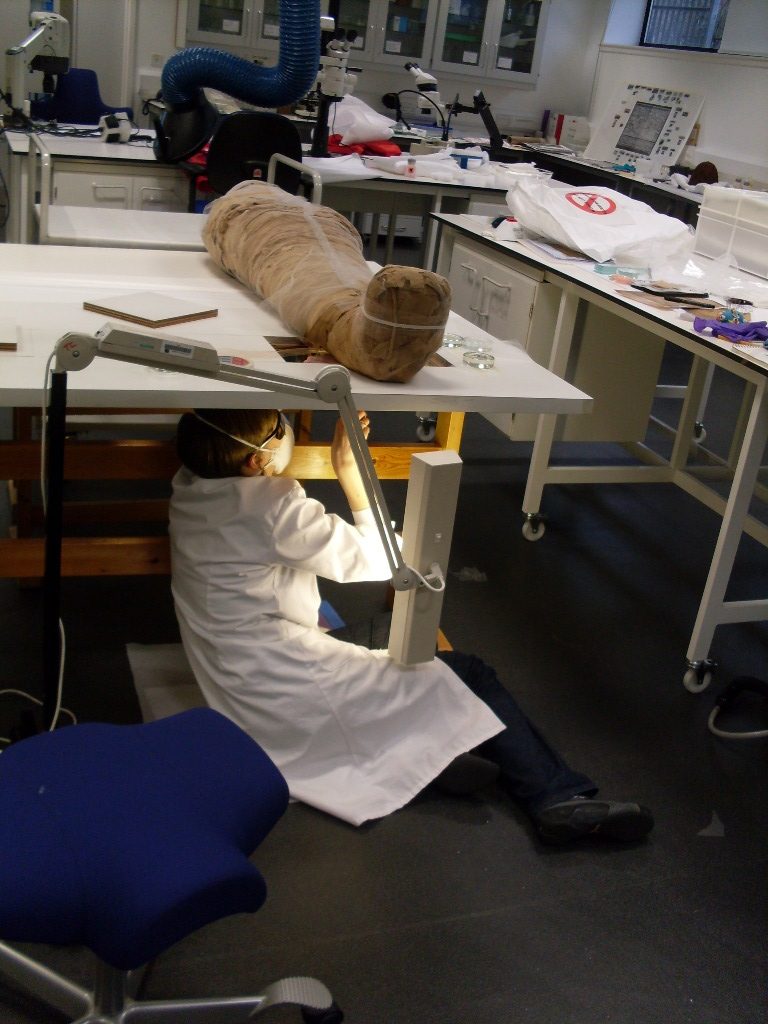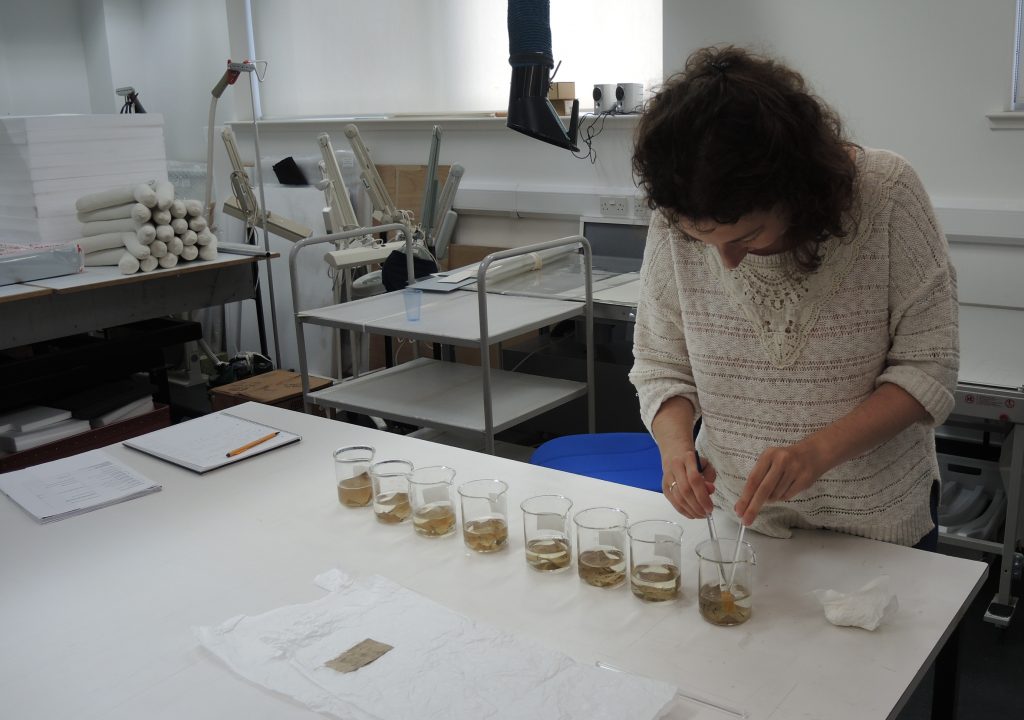Whenever the nature of my profession comes up in conversation, I am never sure what reaction I might get. There are people who are completely unaware of the existence of textile conservation and there are those who ask such detailed questions on the topic that I have to dig into the corners of my mind to satisfy their inquisitiveness.
Reading our blog, you may already be familiar with the type of work we carry out, but there might be some quirks of the job you would have never considered and here are five which have surprised me since starting my career.
Fact 1: ‘Textile’ is not always what it seems
The title ‘textile conservator’ can be misleading because we are actually privileged to work on a wide array of materials. It is due to the fact textiles can be understood very broadly and identified by material, method of production, as well as the type of an object. Textiles can be made of, or accompanied by, elements that range from plant or animal fibres to plastics, including paper, leather, metal, glass and many more.
The techniques of production are equally vast and differ from the earliest examples of knotting right up to relatively recent 3D printed fashion garments. Therefore it is not unusual that our expertise might be sought to preserve a dress made out of a newspaper or a parka from seal’s gut. Every object comes with its challenges, limitations and opportunities, and they all require a different approach and treatment. We are constantly learning since there are no two objects the same.

Fact 2: Being fit
I am often credited with qualities such as patience, great eyesight and some kind of talent for fine arts. Although I don’t consider myself guilty of displaying these virtues and skills I guess there is some truth to it since all of that is necessary for my everyday life. Funnily, nobody remarks on the physical aspect of the job. It might not seem so obvious, but being fit is rather desirable.
Textile conservation involves a wide variety of activities: crawling on the floor to access the back of a tapestry while on a roller, stretching your arms to wet clean a man’s coat, climbing scaffolding to hang a tapestry, squatting while mounting a costume on a mannequin, and stitching in the most awkward positions.
Also, who knew textiles can be so heavy? Very recently we hung the Corryvrechan tapestry back up in the National Museum of Scotland and we required the help of a few people in order to lift it as it weighs 98kg! A career in textile conservation requires strong core muscles, therefore signing up for yoga or a kettlebell regime in your free time is as important as practising manual skills.

Fact 3: Going shopping
We source the tools for our job in various places. In our drawers you will find all sorts of implements including: insect pins for fine fabrics, curved needles used by surgeons, scalpels, tweezers with a whole range of tips (pointed, flat, curved), heavy duty pliers, Japanese strainers and many more interesting objects. Recently, we have been on a mission to find a massive hot water boiler to facilitate the dyeing of large pieces of fabric and we ended up talking to suppliers of home brewing equipment! Finding solutions to our needs requires lots of creative and out-of-the-box thinking.

Fact 4: Constant development
Continuing Professional Development (CDP) is a phrase included in almost every job description and I am not very original saying it is necessary for my role too. It will probably be no surprise to you that we enrol onto courses on weaving, upholstery, feather cleaning and costume making, just to name a few, in order to better understand the objects we work with.
But there is also an aspect of keeping up to date with current scientific developments and discoveries, such as cleaning with lasers, gels and micro-emulsions. Some of these methods prove unsuccessful, some become a part of conservation and soon we forget there was a time that we didn’t do it this way.

Fact 5: Radio preferences
Most textile conservators are familiar with the programs offered on BBC4 Radio. I will even take it a step further and risk the statement that many know their weekly schedule by heart and wait for Desert Island Discs on Friday mornings with a little excitement. The reason behind this preference is very simple. If you are spending the entire day doing stitching support to silk chiffon with almost invisible silk thread you want to limit your distractions and annoyance with repetitive songs. Complete silence can sometimes be as tiring as noise. But a little bit of background chatter is a great buffer. This is the reason why every textile conservator is familiar with The Archers to some extent… Having said that I must confess these days we have embarked on a nostalgic (to some) and educational (to others) journey of widening our knowledge of Scottish pop music while preparing for the forthcoming Rip it Up exhibition at the National Museum of Scotland. For once the music and objects are perfectly linked.
You do not have to have a degree in a textile-related course to become a textile conservator. It certainly helps, but it is not an entry requirement. The students of textile conservation come from different walks of life. Some discover the possibility of this career early on while others become successful in other careers before realising they want to do something else. Various backgrounds will benefit your further development differently so there is no wrong path leading you to become a successful textile conservator. To read more about working as a conservator, follow our conservation blog posts.
